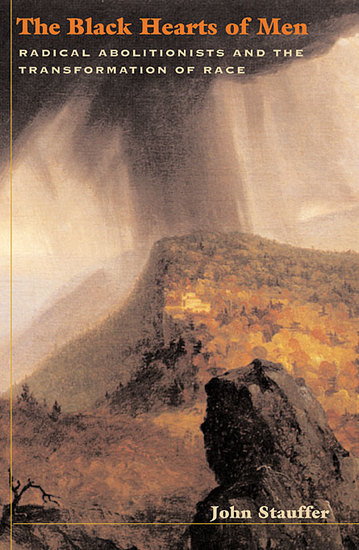The Black Hearts of Men: Radical Abolitionists and the Transformation of Race (2002)
|
At a time when slavery was spreading and the country was steeped in racism, two white men and two black men overcame social barriers to form a unique alliance that sought nothing less than the end of all evil. Drawing on the largest extant bi-racial correspondence in the Civil War era, Stauffer braids together these men's struggles to reconcile ideals of justice with the reality of slavery.
Who could imagine that Gerrit Smith, one of the country's richest men, would ally himself with Frederick Douglass, an ex-slave? And why would James McCune Smith, the country's most educated black man, link arms with John Brown, a bankrupt entrepreneur, along with the others? Distinguished by their interracial bonds, they shared a millennialist vision of a new world where everyone was free and equal. As the nation headed toward armed conflict, these men waged their own war by establishing interracial communities, forming a new political party, and embracing violence. Their revolutionary ethos bridged the divides between sacred and profane, black and white, masculine and feminine, civilization and savagery. In so doing, it embraced a malleable and "black-hearted" self that was capable of violent revolt in order to usher in a kingdom of God on earth. Tracing the rise and fall of their alliance, Stauffer reveals how radical reform helped propel the nation toward war even as it strove to vanquish slavery and preserve the peace. |
* Avery O. Craven Award * Magill's Literary Annual Award * Lincoln Prize 2nd place * Frederick Douglass Book Prize * Dixon Ryan Fox Prize finalist
A story of politics, religion, sin, guilt, passion, murder and expiation. It begins in innocence and good intentions and ends in bloodshed and madness... Stauffer knows what he has with this remarkable story. He deftly outlines the thinking of his subjects, and is especially good at showing the links between their religious beliefs and their politics--New York Times
More than an engaging history of antislavery, this volume restores James McCune Smith and Gerrit Smith to their historical positions as preeminent radical abolitionists and pioneer fighters against racism. Highly recommended for academic and public libraries--Library Journal
Stauffer examines the small group of friends and colleagues who gave the abolitionist movement its focus and voice [and] charts their collective efforts to convert their compatriots to the abolitionist cause, which led, he writes, to both successes and failures.... A welcome addition to the historical literature--Kirkus Reviews
Stauffer offers an account of these four lives joined for a historical moment, shows how the four worked together on temperance and feminist issues, party building, and other political work along with their antislavery activities, exploring the practical and ideological glue that held them together. A splendidly illustrated excursion into the American fascination with daguerreotype shows the four using that form to further their public image.... [The Black Hearts of Men] offers an intense look at the mechanics of freedom--Publishers Weekly
Stauffer intertwines the antislavery activities of Frederick Douglas, James McCune Smith, John Brown, and Gerrit Smith.... The book expands our knowledge of the changing nature of antislavery and antebellum reform as the nation approached the Civil War--Choice
A richly interdisciplinary study, examining portraiture, literature, religion, intellectual biography, and the wider social and cultural context provided by antebellum America… captures the potential for revolutionary change in the antebellum United States embodied in the radical abolitionists--History

